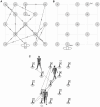Cognitive-Motor Interference during Walking in Older Adults with Probable Mild Cognitive Impairment
- PMID: 29321738
- PMCID: PMC5732228
- DOI: 10.3389/fnagi.2017.00350
Cognitive-Motor Interference during Walking in Older Adults with Probable Mild Cognitive Impairment
Abstract
Although several studies have shown that dual-tasking (DT) mobility is impaired in Alzheimer's disease, studies on the effects of DT conditions in probable Mild Cognitive Impairment (pMCI) have not yielded unequivocal results. The objectives of the study were to (1) examine the effect of a concurrent task on a complex walking task in adults with cognitive impairment; and (2) determine whether the effect varied with different difficulty levels of the concurrent task. Furthermore, the study was designed to evaluate the Trail-Walking Test (TWT) as a potential detection tool for MCI. We examined DT performance in 42 young adults (mean age 23.9 ± 1.98), and 43 older adults (mean age 68.2 ± 6.42). The MoCA was used to stratify the subjects into those with and without pMCI. DT was assessed using the TWT: participants completed 5 trials each of walking along a fixed pathway, stepping on targets with increasing sequential numbers (i.e., 1-2-…-15), and increasing sequential numbers and letters (i.e., 1-A-2-B-3-…-8). Motor and cognitive DT effects (DTE) were calculated for each task. ROC curves were used to distinguish younger and healthy older adults from older adults with pMCI. The TWT showed excellent test-retest reliability across all conditions and groups (ICC : 0.83-0.97). SEM% was also low (<11%) as was the MDC95% (<30%). Within the DT conditions, the pMCI group showed significantly longer durations for all tasks regardless of the cognitive load compared to the younger and the healthy older adults. The motor DTEs were greatest for the complex condition in older adults with pMCI more so than in comparison with younger and healthy older adults. ROC analyses confirmed that only the tasks with higher cognitive load could differentiate older adults with pMCI from controls (area under the curve >0.7, p < 0.05). The TWT is a reliable DT mobility measure in people with pMCI. However, the condition with high cognitive load is more sensitive than the condition with low cognitive load in identifying pMCI. The TWT-3 thus could serve as a screening tool for early detection of individuals with pMCI. Future studies need to determine the neural correlates for cognitive-motor interference in older adults with pMCI.
Keywords: Trail-Walking Test; cognitive reserve; dual task costs; executive attention network; reliability; visuo-spatial working memory.
Figures




Similar articles
-
[Trail walking test for assessment of motor cognitive interference in older adults. Development and evaluation of the psychometric properties of the procedure].Z Gerontol Geriatr. 2015 Dec;48(8):722-33. doi: 10.1007/s00391-015-0866-3. Epub 2015 Mar 24. Z Gerontol Geriatr. 2015. PMID: 25801510 German.
-
Profiles of Cognitive-Motor Interference During Walking in Children: Does the Motor or the Cognitive Task Matter?Front Psychol. 2018 Jun 13;9:947. doi: 10.3389/fpsyg.2018.00947. eCollection 2018. Front Psychol. 2018. PMID: 29951020 Free PMC article.
-
Cognitive-motor interference during fine and gross motor tasks in children with Developmental Coordination Disorder (DCD).Res Dev Disabil. 2016 Oct;57:136-48. doi: 10.1016/j.ridd.2016.07.003. Epub 2016 Jul 16. Res Dev Disabil. 2016. PMID: 27428781
-
Dual task walking costs in older adults with mild cognitive impairment: a systematic review and meta-analysis.Aging Ment Health. 2021 Sep;25(9):1618-1629. doi: 10.1080/13607863.2020.1802576. Epub 2020 Aug 6. Aging Ment Health. 2021. PMID: 32757759
-
The impact of cognitive-motor interference on balance and gait in hearing-impaired older adults: a systematic review.Eur Rev Aging Phys Act. 2024 Jun 24;21(1):17. doi: 10.1186/s11556-024-00350-x. Eur Rev Aging Phys Act. 2024. PMID: 38914940 Free PMC article. Review.
Cited by
-
Associations of Motor Performance and Executive Functions: Comparing Children with Down Syndrome to Chronological and Mental Age-Matched Controls.Children (Basel). 2022 Jan 5;9(1):73. doi: 10.3390/children9010073. Children (Basel). 2022. PMID: 35053698 Free PMC article.
-
Combining motion performance with EEG for diagnosis of mild cognitive impairment: a new perspective.Front Neurosci. 2024 Dec 4;18:1476730. doi: 10.3389/fnins.2024.1476730. eCollection 2024. Front Neurosci. 2024. PMID: 39697780 Free PMC article. No abstract available.
-
Profiles of Motor-Cognitive Interference in Parkinson's Disease-The Trail-Walking-Test to Discriminate between Motor Phenotypes.Brain Sci. 2022 Sep 9;12(9):1217. doi: 10.3390/brainsci12091217. Brain Sci. 2022. PMID: 36138953 Free PMC article.
-
Impact of adding a cognitive task while performing physical fitness tests in women with fibromyalgia: A cross-sectional descriptive study.Medicine (Baltimore). 2018 Dec;97(51):e13791. doi: 10.1097/MD.0000000000013791. Medicine (Baltimore). 2018. PMID: 30572536 Free PMC article.
-
Do the dual-task "8-foot up and go" tests provide additional predictive value for early detection of cognitive decline in community-dwelling older women?Aging Clin Exp Res. 2022 Oct;34(10):2431-2439. doi: 10.1007/s40520-022-02193-x. Epub 2022 Jul 15. Aging Clin Exp Res. 2022. PMID: 35838984 Free PMC article.
References
-
- Albert M. S., DeKosky S. T., Dickson D., Dubois B., Feldman H. H., Fox N. C., et al. . (2011). The diagnosis of mild cognitive impairment due to Alzheimer's disease: recommendations from the national institute on aging-Alzheimer's association workgroups on diagnostic guidelines for Alzheimer's disease. Alzheimers Dement. 7, 270–279. 10.1016/j.jalz.2011.03.008 - DOI - PMC - PubMed
-
- Alexander N. B., Ashton-Miller J. A., Giordani B., Guire K., Schultz A. B. (2005). Age differences in timed accurate stepping with increasing cognitive and visual demand: a walking trail making test. J. Gerontol. A Biol. Sci. Med. Sci. 60, 1558–1562. - PubMed
LinkOut - more resources
Full Text Sources
Other Literature Sources
Medical

